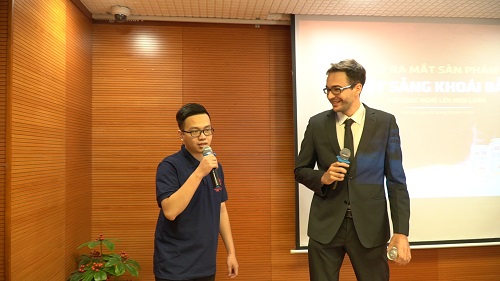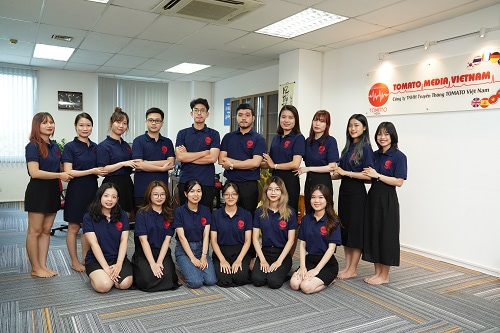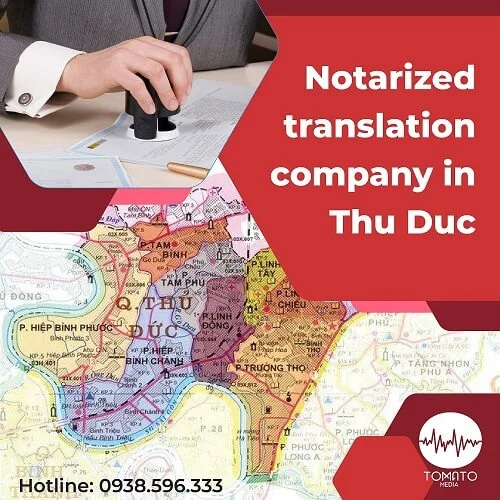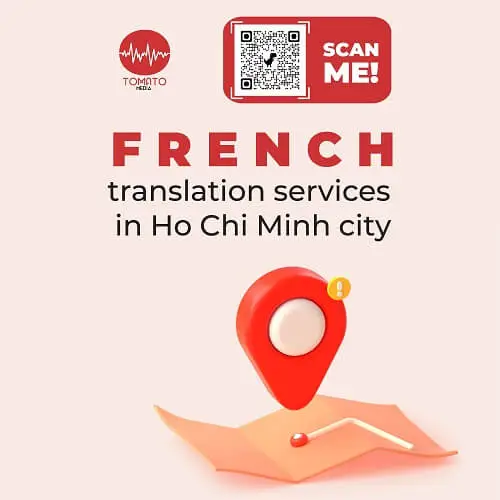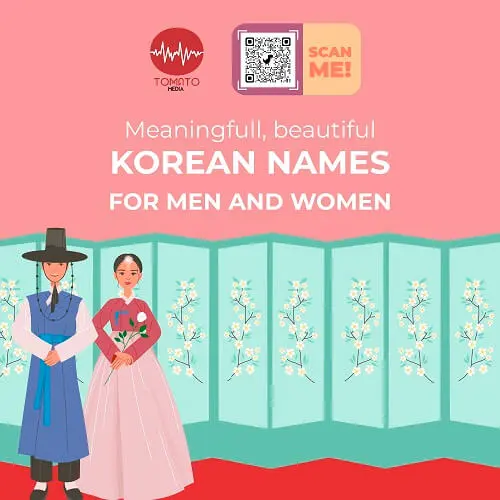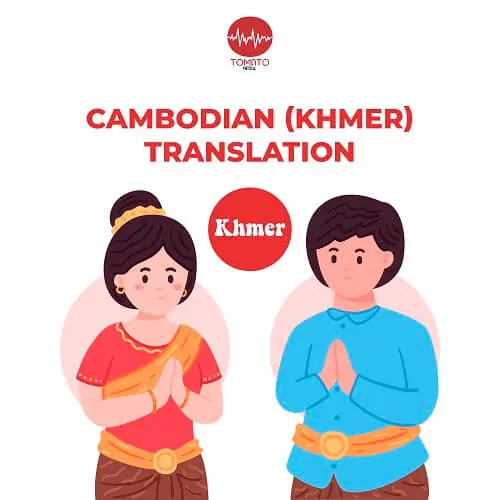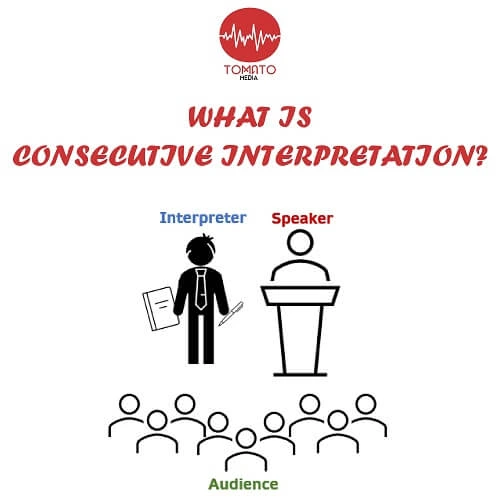Summary of reputable and quality translation and notarized translation units and companies in Thu Duc The following are prestigious, high-quality translation companies and units in Thu Duc City that we have compiled: No. Thu Duc notarized translation Thu Duc translation Address 1 Thu Duc notarized translation – Tomato Media 24/7 fast support in Thu Duc [...]
What is interpretation? Proper understanding of interpretation types
Interpretation is essential when carrying out the verbal exchange of information between two or more people who do not speak the same language. Without this “language bridge”, the conversation would not have been possible. What is an interpretation service, actually? Refer to the information below to better understand the profession.
Unique pricing options – Optimal costs provided
GET FREE QUICK COST – SAVING QUOTES

* We immediately provide a detailed quotation, including cost, turnaround time, and method of implementation, within just 15 minutes of the request.
NỘI DUNG (CONTENT)
What is interpretation? How is interpretation different from translation?
What is interpretation? interpretation is the simultaneous or consecutive verbal translation of a sentence, paragraph, or speech from one language to another while maintaining its original meaning. It aims to help non-language speakers understand and grasp the speaker’s opinions.
But at the moment, some people still misunderstand interpretation and translation as two types of the same thing. In fact, these are two completely different translation aspects. The interpretation form presents a lot of high pressure on translation time, translation speed, improvisation skills, and the working style of the interpreter.
Meanwhile, translation is a form of written translation. Therefore, the most important issue in translation is the accuracy, coherence, fluency, and sufficient meaning of the translation rather than the above requirements for the interpreter.
Who are interpreters?
Interpreters are those who perform verbal translations from one language to another. The success of an interpreter is primarily measured by how well he or she assists the parties in communication or dialogue in understanding one another’s thoughts and messages.
One thing that makes many admire interpreters is that they often go on business trips to many places, meet and talk with many people, and exchange and expand their understanding through many cultural, political, and social activities. In addition, the income and opportunities for career advancement are also very attractive,
Especially for those who are fluent in many languages and have a deep understanding of Vietnamese, as well as having a bright appearance. Most will get jobs with a dream income. However, with the opportunity comes great pressure, which requires the interpreter to constantly gain experience and improve their knowledge and foreign language skills.
Common types of interpretation in the world
Currently, there are 5 common types of interpretation in the world:
1| Consecutive interpretation
This form is called consecutive interpretation. In particular, the interpretation process is performed as soon as the speaker has finished speaking in the source language. To ensure greater accuracy, the interpreter can ask the speaker to stop or repeat the sentence in this type of consecutive interpretation.
The advantage of this form is that there is no need to use support devices or make complex recordings, and the timing arrangement is also quite flexible. Cases that can be applied to the consecutive interpretation type are also very diverse, such as interpretation at conferences, seminars, contract signing meetings, press conferences for product launches, tour guides, interviews, human resource training, etc.
2| Simultaneous interpretation
Simultaneous interpretation belongs to the group of the most difficult levels in translation services. With this type, the interpreter must perform the translation at the same time as the source-language speaker while hearing and understanding the meaning of the adjacent sentence. The interpreter, in particular, is seated in a booth that is equipped with translation tools such as microphones and headphones.
Although it is said to be “simultaneous,” the interpretation actually takes about 5–10 seconds after the previous sentence. Because translation processing time is extremely limited (only a few seconds), the interpreter must translate definitively to avoid delay in the following sentences, causing a lack of information in the exchange.
It can be said that the highest goal of the simultaneous translation form is to accurately and completely interpret what the speaker has said, not to excessively express the sentence in another way. The cases applying this form are often in seminars, international conferences, high-level meetings, important information exchanges, etc.
3| Whispered interpretation
Whispered interpretation is a type of interpretation that resembles consecutive interpretation. The difference is that the interpreter performs the translation by whispering in the listener’s ear or speaking quietly to a group of about 3–4 people.
The advantage of this type is that it ensures privacy, keeps information confidential, and does not affect people’s general discussion. Whispered interpretation can be applied to negotiations, business negotiations, or trials, etc.
4| Remote (online) interpretation
In the current COVID-19 pandemic, remote interpretation is seen as an effective solution for meetings and workshops, helping to maximize infection prevention in the community. To implement the above method, interpreters need to have a full range of tools for listening, speaking, or visual support like a laptop, internet connection, microphone, headphone, mobile phone, etc.
Afterward, the interpretation process takes place through forms such as voice calls or video calls on such platforms as Zalo, Google Meet, Zoom, and Skype. Normally, interpreters apply consecutive or simultaneous interpretation to translate for the parties involved in the conversation.
5| Accompanying interpretation
With accompanying interpretation, the interpreter usually acts as an assistant to follow the customer during business trips, meetings, travel, etc. The interpreter uses the consecutive or whispered interpretation form to convey information to the customer as well as interpret the customer’s messages to everyone.
When participating in accompanying interpretation, the interpreter is not only responsible for translating but also helps customers connect with partners and assists them in understanding more about culture, cuisine, and how to communicate with native speakers. As a result, it promotes the success of commercial, political, or defense cooperation deals.
Cases requiring interpretation in English, Chinese, Japanese, Korean, and other languages
The above types of interpretation are often used in the cases of translating English, Chinese, Japanese, Korean, and other languages as follows:
Conference – seminar interpretation
- Conferences, high-level seminars on environmental issues, politics or solutions for global economic development, governmental meetings for multinational cooperation, etc.
- Specialized conferences and seminars
- Conferences, seminars on business cooperation, business results, etc.
- Conferences, seminars to share study abroad experiences, communication, finance, etc.
- Conferences and seminars on staff training
- etc.
Negotiation interpretation
- Interpretation for individuals, including: divorce agreements, assignments – divisions of property, settlement of disputes, agreements for land purchase or lease of houses, etc.
- Interpretation at negotiations between companies, corporations, and organizations such as: joint venture cooperation meetings, share transfer meetings, board of directors meetings, business seminars, meetings to sign purchase contracts or merger agreements, etc.
- Interpretation for international negotiations: Related to meetings, visits between the two governments, international bilateral or multilateral negotiations, multinational conferences on politics, military, medicine, economics, diplomacy, etc.
Fair – event – exhibition interpretation
- Interpretation at trade fairs – expos: introduction of products, services, production technology, display of information technology equipment, etc.
- Interpretation for multi-sector non-commercial fairs and exhibitions: food fairs, cultural exhibitions, traditional costume exhibitions, photographic and art exhibitions, etc.
- Interpretation at international cooperation fairs or regional fairs such as: import and export fairs, cultural exchange fairs, exhibitions on achievements of international development cooperation, etc.
Project interpretation
- Interpretation at factory construction projects, industrial parks, etc.
- Interpretation for cooperation negotiation projects on business, education, health, military, environment, agriculture, etc.
- Interpretation for projects on corporate training, training of public servants and state officials…
- Interpretation for scientific research projects
- etc.
Factory – construction site – workshop interpretation
- Interpretation for construction field surveys
- Translation of construction progress
- Interpretation for staff training sessions
- Interpretation during work progress report meetings
- Interpretation of information about production line systems, operation quality
- etc.
Court interpretation
- Court interpretation involving civil issues: divorce, property disputes, mediation, etc.
- Court interpretation involving criminal elements: assault, robbery of property, fraudulent appropriation of property, smuggling, etc.
5 common interpretation levels
Accordingly, to help accurately delineate the appropriate interpreter for the forms and situations that need interpretation, interpreting skills are usually divided into the following 5 common levels:
- Level 1. Language assistant
Level-1 individuals are not interpreters but are often referred to as “language assistants.” They only need to reach a basic level of a foreign language to perform translations in daily communication such as conversations about family, work, hobbies or job exchanges, etc.
- Level 2. Semi-professional interpreter
They are mainly intermediate-level interpreters who are not trained in the interpreting profession. These interpreters mostly translate on occasions involving meetings, and internal work exchanges between people of the same group or business.
- Level 3. Interpreter
This is the lowest level of competence in professional interpretation. Individuals at this level usually have a foreign language level above the intermediate level, with specialized training at Level 3 or above. Therefore, most of them can take on specialized interpretation for a particular field such as education, environment, banking, social work, medicine, etc.
- Level 4. Conference interpreter
These are interpreters with high professional qualifications, good situational handling skills, and in-depth knowledge of one or more fields. They are competent and qualified to perform various types of interpreting such as consecutive interpreting, simultaneous interpreting, or accompanying interpreting for conferences, seminars, business meetings, negotiations, etc.
- Level 5. Senior conference interpreter
The highest level in five levels They are competent interpreters with excellent situation handling abilities, substantial experience, a highly professional working manner, and significant seniority in the industry.
Level 5 interpreters are able to participate in all forms of interpretation, such as simultaneous interpreting at international conferences and seminars, interpreting at live TV shows, multinational negotiations, bilingual hosting, etc. Some of them also have leadership skills for work organization and supervision of an interpreter team.
Skills required by an interpreter
To become a professional interpreter, you must have at least five basic skills.
- Language skills
In addition to strong interpreting abilities, an interpreter must be able to grasp and use words and sentence structure with confidence. The highest goal is to accurately and fully convey the meaning of the message in the source language.
To gain the above skills, the interpreter, in addition to training in listening skills and the speed of translation, needs to regularly cultivate, improve knowledge, and learn specialized terms to be able to handle unexpected cases. Additionally, fluency in the native language as well as other languages must both be improved.
- Information search skills
This is a must-have skill for all professional interpreters. Because interpreters are mostly involved in translation in many different areas, which may make them encounter many difficult and rare words that they themselves do not understand. To solve the problem, it is best to improve your lookup skills with search engines like Google, Bing…
- Listening – understanding – communication skills
When interpreting, interpreters must perform the simultaneous tasks of listening and understanding the meaning of the sentence in just a few seconds. Afterward, they have to convey the meaning of that statement in a different language. Therefore, listening, understanding, and communication skills must be developed frequently and continuously throughout their careers in order to become skilled interpreters.
- Regularly improve understanding of general knowledge
In the interpretation profession, one of the ways for interpreters to handle unexpected situations well is to have a deep understanding of the political knowledge, culture, and people of each country and region. In order to obtain the above understanding, interpreters need to regularly improve reading skills, and update more basic knowledge about society, culture, history, and many others through books, newspapers, television, the internet, etc.
- High discipline, formal style, and professional manners
A qualified interpreter must show up 15 to 30 minutes before the interpretation session starts. At the same time, it is necessary to pay attention to appearance and manners in order to best suit the project or event in which they perform the interpretation.
In the interpretation process, especially in court or surgical cases, the interpreter also needs to be able to control emotions well to ensure the process is successful.
Difficulties in the interpretation profession
Being fully equipped with key skills in the interpretation profession is the best way to deal with the challenges encountered while working. Among them, the most typical are the following difficulties.
- The work pressure is extremely heavy
The interpreter’s mind becomes easily overworked and exhausted from having to listen and translate nonstop for long periods of time with high intensity. They are more likely to ruin the translation if their mentality is unstable and their skills are lacking.
- Fierce competition and easy to be eliminated
Interpreters will have to compete fiercely with non-professional interpreters and have fewer opportunities to work on significant projects if they do not speak at least two or more foreign languages. Not to mention the lack of knowledge of the language or cultural knowledge, which may lead them to be left very far behind.
- Extremely high discipline in the profession
The “ethics of the interpretation profession” are that the interpreter is obliged to have absolute honesty with the source language. The translated content must ensure to fully convey the information and meaning of the original sentence; just a mistake in a phrase or a word is very easy to lead to a deviation of the whole translation, causing serious misunderstandings. important to the parties to the exchange.
- Less time to devote to family, friends
The nature of the interpreter profession often has to move to many places continuously, sometimes having to go on business trips for weeks or months. This easily leads to a narrowing of the interpreter’s time for their family and friends. If you are the type of person who does not like to travel constantly to many places and does not want to live far away from home for too long, then the interpreter job may not be suitable for you.
However, none of the jobs are particularly good. Every profession has both good and bad sides, and so does the interpretation profession. So, if you are a person who loves languages, communicates verbally, has a good ability to work under pressure, and is willing to go anywhere the job requires, a career as an interpreter will help you gain a lot of benefits, both economically and mentally.
Translation and interpretation are two different jobs
Interpretation and translation are both forms of translation, but they are very different in terms of the nature of the work. Here are some differences between these two professions:
| Characteristics | Translation | Interpreter |
| How to translate | Translations are expressed in written language | Communicating verbal content |
| Implementation time | There is no pressure on time. The translator always has time to prepare and translate. | Great pressure on time. The translator must have heard, understood and translated instantly but still ensure the correct accuracy of the source language. |
| Support tools | Use translation support tools such as dictionaries, error testing software, Office technology software, etc. |
Most have no tools to support translation. If any, it is usually the tools associated with devices such as headphones and microphones. With the remote interpreter, there are more phones, laptops, online meeting software programs, etc. |
| Accuracy | Accuracy is mandatory and has very high standards in the translation profession | Accuracy is usually lower than in the translation profession. |
| Coherence, fluency | Required in translations because the translator has more time to translate than the interpreter. | There is no fluency, seamless in translation words as compiled. |
| Number of translation participants | Can have a lot of participants | Most often work independently |
Need to translate for your project, choose experts
As you can see, interpretation is hard work. If you need to find a professional interpreter, don’t prioritize price alone. Because finding cheap services is not difficult, but finding an interpreter “worth the money” is extremely difficult. So, the most important thing for Tomato is the quality of the interpreter.
They must be well-trained people with bachelor’s degrees or higher and a minimum of 4 years of experience. Because this is the leading factor in our receiving the trust of many customers. Furthermore, to optimize cost and accuracy when translating, the company has built a quality management system that meets the international standard ISO 9001:2015.
We aim to help customers find competent interpreters with professional skills, thereby bringing success to every translation project. Like the company’s tomato symbol, it’s not only bright red on the outside but also berry red on the inside. Contact the hotline at 0938 596 333 to immediately verify Tomato’s service, and you will surely achieve maximum satisfaction.
| Ready to get started? |
Have a large project? |
| GET A QUOTE | ✉ CONTACT US |



